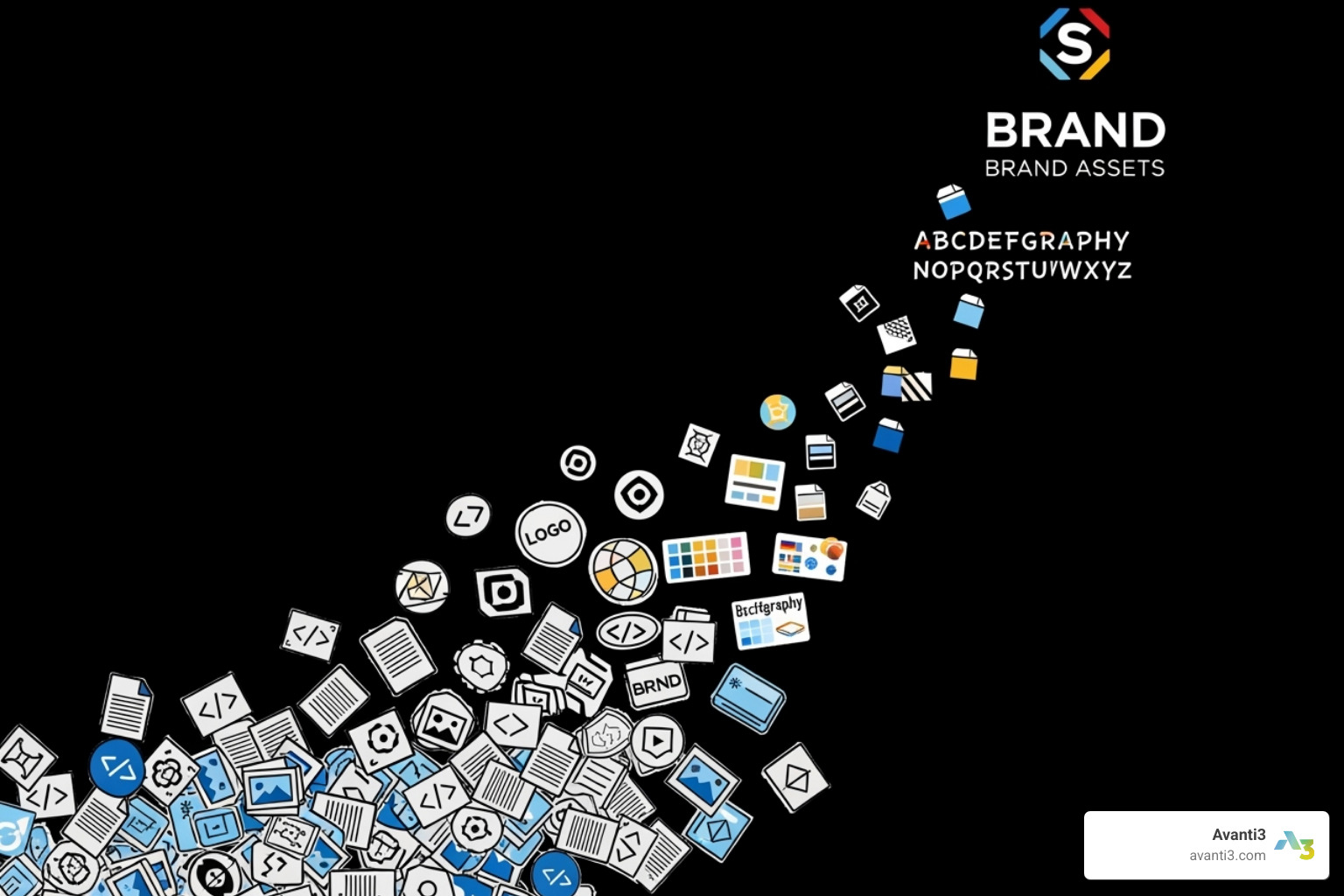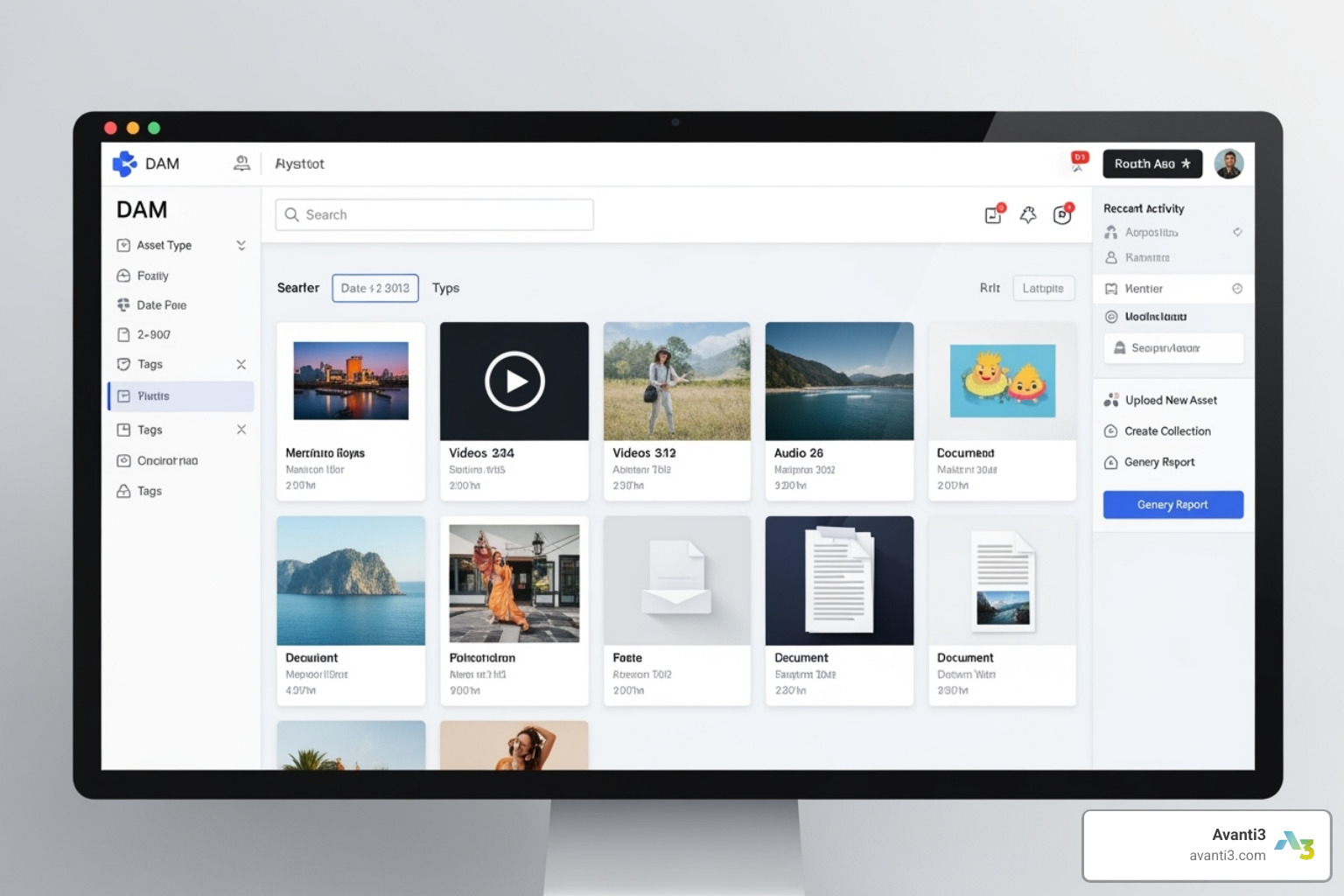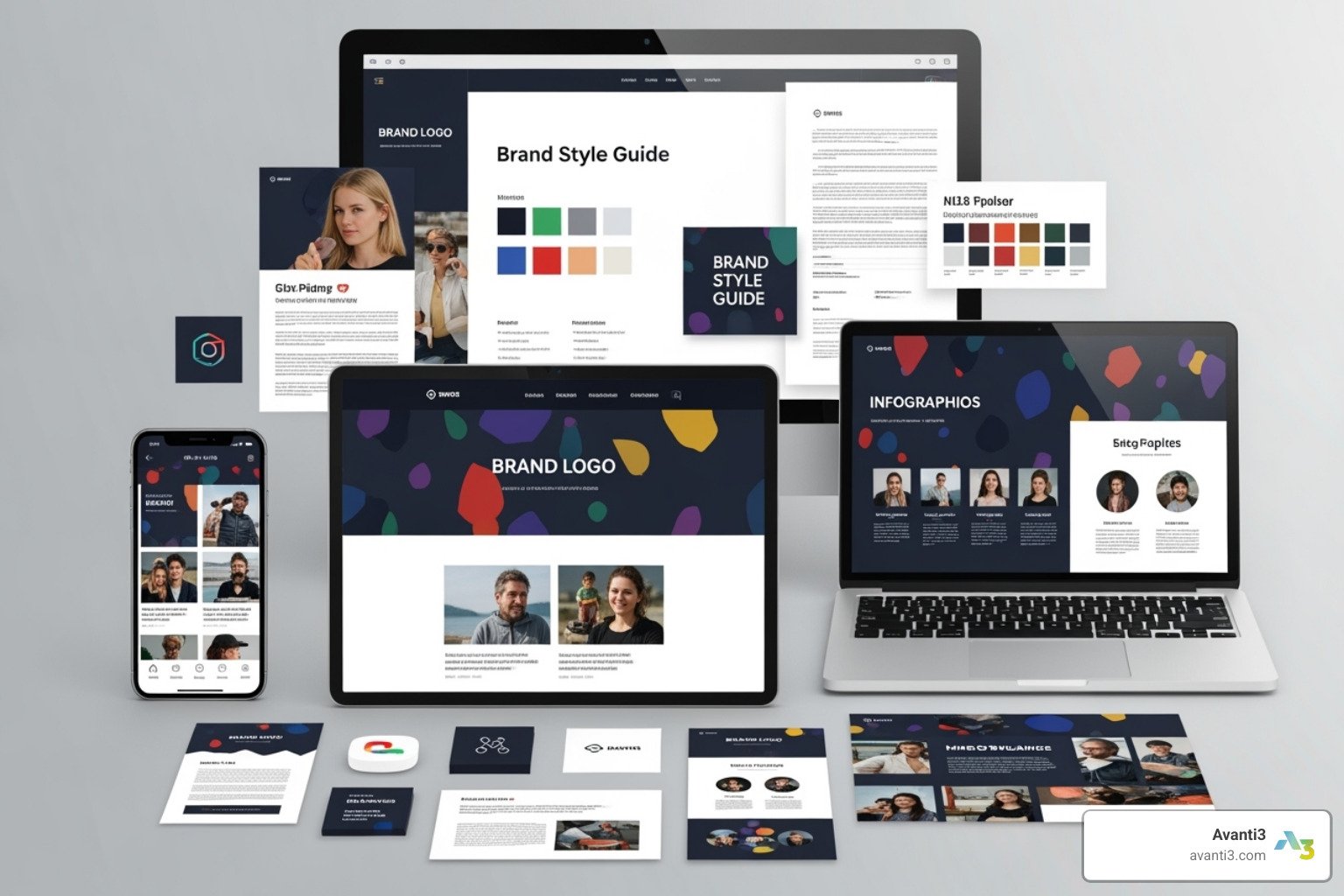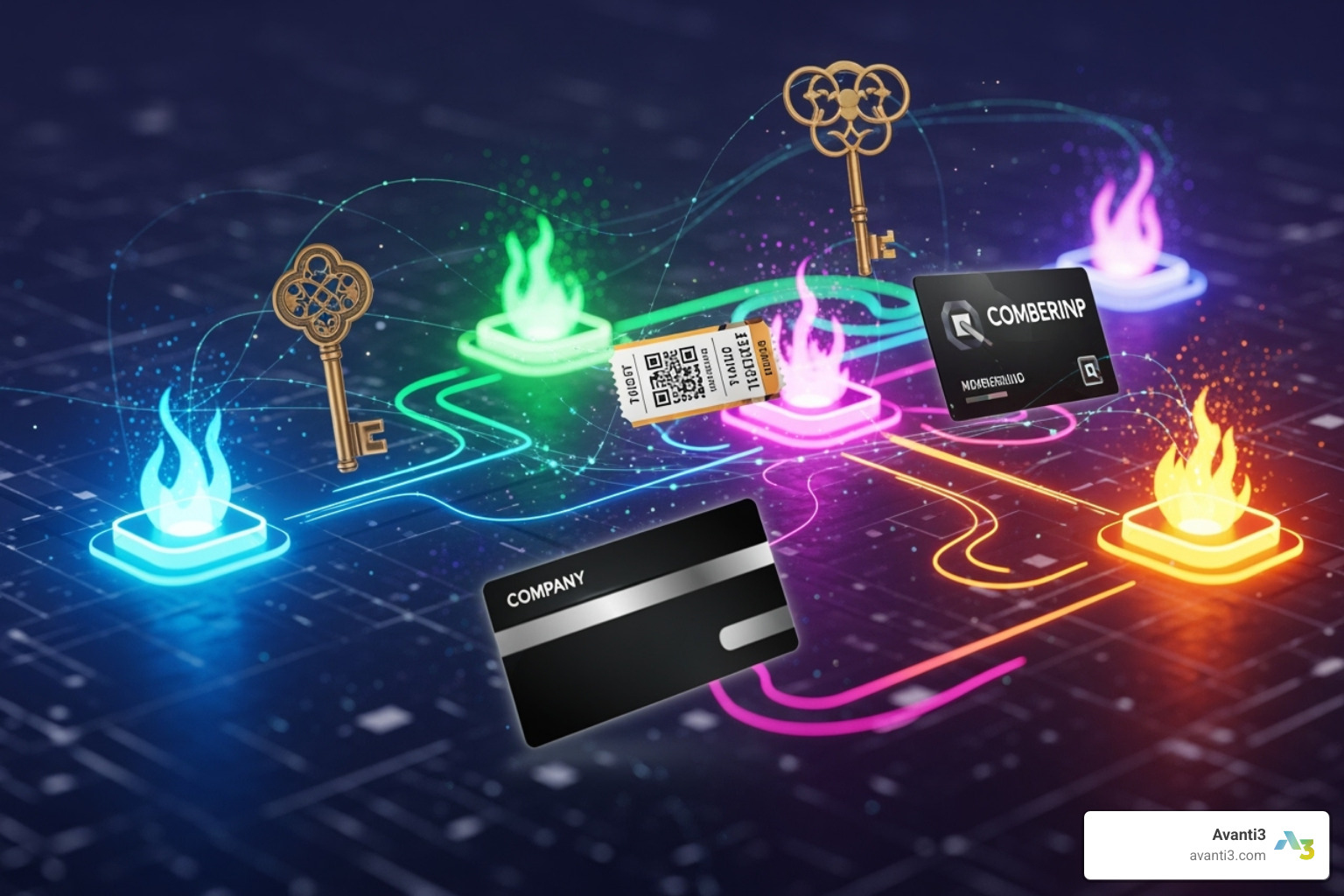What Are Brand Assets and Why Are They Your Most Valuable Currency?
Brand digital assets are the digital elements that define your company’s identity, from logos and color schemes to website designs and social media templates. Stored and managed digitally, they are essential for building recognition and trust with your audience.
Key Brand Digital Assets Include:
- Visual Identity: Logos, color palettes, typography, photography styles
- Content Assets: Website designs, social media templates, email signatures
- Marketing Materials: Video content, branded graphics, presentation templates
- Audio Elements: Jingles, branded music, podcast intros
The numbers prove their value: 81% of consumers say trust in a brand is crucial for purchasing decisions, and consistent brand presentation across platforms increases revenue by up to 23%. These assets are strategic tools that build trust, improve ROI through reuse, and strengthen brand identity. When managed properly, they become your most valuable currency in the digital marketplace.
Defining Brand Assets vs. Digital Assets
A digital asset is any content stored digitally that holds value. Gartner’s Glossary defines digital assets as digital material like text, graphics, audio, and video. However, not every digital file is an asset. The key is value. As expert Theresa Regli describes, digital assets have “intrinsic or acquired value”. A professional photo for a campaign is a digital asset; a one-off screenshot is just a file.
Brand assets are the specific elements that build a brand’s identity and recognition, such as logos, colors, taglines, and typography. The relationship is simple: all brand digital assets are digital assets, but not all digital assets are brand assets.
A digital asset becomes a brand digital asset when it’s designed to represent and promote your brand identity. For example, your logo’s .SVG file is a brand digital asset. A licensed stock photo becomes one only when integrated into your unique branded style. Their value is tangible, measured by creation cost, time, and irreplaceability, which helps prioritize what’s most important for your brand’s online presence.

The Critical Role of Brand Assets in Business Success
Brand digital assets are crucial for business success, as your digital footprint is often a customer’s first impression.
-
Build Brand Trust: Trust is a key factor in purchasing decisions for 81% of consumers, and 46% will spend more on a trusted brand. Well-managed assets deliver the consistency that builds this trust.
-
Drive Revenue Through Consistency: A unified brand presence across all platforms feels professional and reliable. This consistency has a direct financial impact, with some studies showing it can increase revenue by up to 23%.
-
Strengthen Brand Identity: Your assets express your brand’s personality. A recognizable logo, color scheme, and font create a distinct identity. Since 50% of consumers are more likely to buy from a company with a familiar logo, a strong identity provides a significant advantage.
-
Foster Customer Loyalty: Consistency creates familiarity and comfort, which encourages repeat business. By delivering your brand’s essence in every interaction, you build strong Digital Brand Engagement and lasting customer relationships.
A Practical Guide to Your Brand Digital Assets

Now that we understand the value of brand digital assets, let’s get practical. Identifying, creating, and managing these elements requires a robust system that ensures organization, accessibility, and efficiency.
Key Examples of Brand Digital Assets
Brand digital assets are the diverse content types that reinforce your brand’s identity. Here are the most impactful examples:
- Logos: The primary visual identifier of your brand. Essential to have in various digital formats (SVG, PNG, JPG) for all applications.
- Color Palettes: A defined set of primary, secondary, and accent colors with specific hex/RGB codes. Using the right color can improve engagement by 40%.
- Typography: The specific font families and usage guidelines for headlines and body text that communicate your brand’s personality.
- Photography and Imagery: A consistent photographic style (e.g., product shots, lifestyle images, illustrations) that aligns with your brand voice.
- Video Content: A powerful storytelling tool to humanize your brand, from social media clips to product demos. 74% of marketers use visuals in over 70% of their content, showing its importance.
- Social Media Templates: Branded templates for posts, stories, and ads to ensure a consistent look across all social platforms.
- Email Signatures and Email marketing Templates: Consistently branded signatures and email templates for professional communication and a cohesive customer experience.
- Website Design Elements: The layout, UI components, and graphics that create a seamless, on-brand user experience on your website.
- Taglines and Slogans: Short, memorable phrases that encapsulate your brand’s mission, like these famous taglines.
- Audio Assets: Recognizable jingles, sound effects, or voiceovers that make your brand memorable.
Best Practices for Managing Your Brand Digital Assets
Creating great assets is half the battle; effective management is where the magic happens. Without it, assets become chaotic, leading to inconsistency and wasted time. This is where Digital Asset Management (DAM) systems and best practices are essential.
- Implement a DAM System: Use a Digital Asset Management (DAM) system as a central hub to store, organize, and distribute all assets. This prevents costly re-creation of assets, a problem for 41% of organizations without a DAM.
- Develop Brand Guidelines: Create a clear document outlining the correct usage for logos, colors, fonts, and tone of voice to ensure consistency across all teams.
- Use Version Control: A DAM system’s version control ensures everyone uses the latest, approved version of an asset, eliminating confusion and protecting brand integrity.
- Set Access Permissions: Use granular controls to define who can view, edit, or share specific assets, protecting your content and ensuring only approved materials are used.
- Tag with Rich Metadata: Use keywords, descriptions, usage rights, and other metadata to make assets easily searchable. This is the key to findability.
- Integrate with Other Tools: Ensure your DAM can integrate seamlessly with other tools like your CMS and CRM to streamline workflows.
- Conduct Regular Audits: Periodically review your asset library to archive or remove outdated content, keeping your brand current.
- Empower Teams with Templating: Use brand templates to allow non-designers to create on-brand materials efficiently. This is crucial, as 65% of companies create branded materials weekly.
- Foster Digital Community Building: Make it easy for partners and influencers to access approved assets, turning them into brand advocates and extending your reach.
The Future of Branding: Evolving Assets and Long-Term Value

The world of brand digital assets is constantly evolving. New technologies like AI, blockchain, and AR are creating exciting possibilities for branding. The brands that thrive will be those that accept these changes while staying true to their core identity, keeping their assets current without losing their unique style.
The Evolution of Brand Assets: AI, Blockchain, and Beyond
Technology is reshaping brand digital assets. Three key innovations are leading the way:
-
Artificial Intelligence: AI is a powerful creative assistant. It can automatically tag images for instant searchability and generate on-brand marketing copy or visuals. As seen in AI Digital Marketing, AI enables personalized experiences at scale while ensuring consistency.
-
Blockchain and NFTs: This technology provides verifiable ownership and authenticity for digital items. Brands can use NFTs as digital twins for physical products or for exclusive NFT Digital Art Sales. With Blockchain Content Distribution, brands can offer unique digital experiences to build loyalty.
-
Augmented and Virtual Reality (AR/VR): AR and VR create immersive brand experiences. AR filters allow virtual product try-ons, while VR showrooms let customers explore products in 3D. These technologies transform static assets into memorable, interactive experiences.
Strategies for Keeping Your Assets Relevant and Fresh
To prevent your brand digital assets from becoming stale, adopt these strategies:
-
Conduct Regular Audits: Periodically review your asset library to ensure your logo, colors, and imagery still align with your brand and audience.
-
Analyze Market Trends: Stay informed about shifts in design, technology, and consumer preferences to keep your assets from looking outdated.
-
Use A/B Testing and Feedback: Test different asset versions and gather direct feedback from your audience through surveys or polls to guide your updates.
-
Use the Distinctive Asset Grid: Evaluate which assets are most unique and recognizable to your brand, helping you focus your creative energy where it matters most.
-
Plan Strategic Refreshes: When your company evolves, a thoughtful brand refresh can update your assets while maintaining the trust you’ve built.
-
Design for Flexibility: Create modular and scalable components that can be easily adapted for new campaigns or platforms without starting from scratch.
Ready to take your brand into the future? The digital landscape offers incredible opportunities. Explore NFT engagement tools and see how Avanti3 can help you create cutting-edge digital experiences that build lasting connections and drive real business growth.






